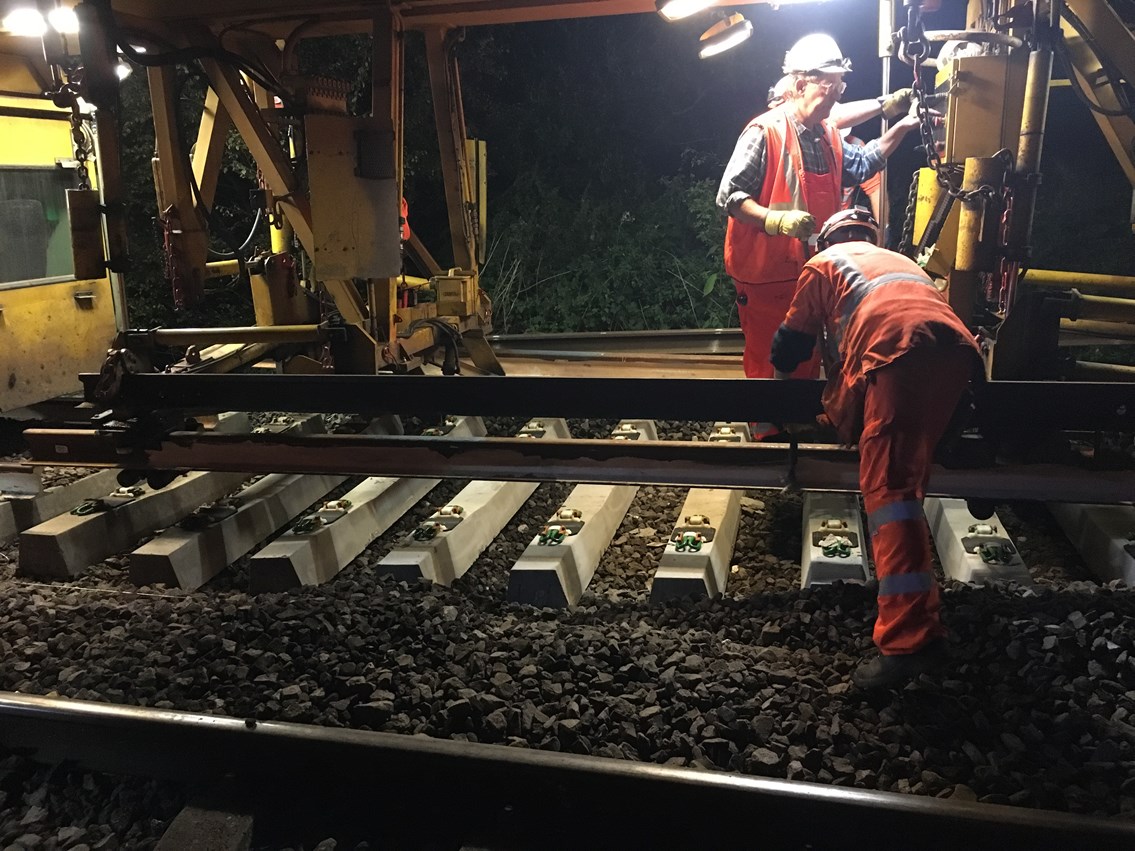Monday 19 Sep 2016
Network Rail completes track renewal programme in Yorkshire
- Region & Route:
- | Eastern
A specialist engineering train has completed a four year maintenance programme on the railways serving Yorkshire this weekend.
Network Rail’s Track Renewal System (TRS) has been working five nights per week in order to minimise passenger disruption with the upgraded track providing passengers with smoother and more reliable journeys.
The TRS has replaced around 250 miles of track across Yorkshire and the routes which serve it, including on the East Coast Main Line. Since the work began in 2012, the distance replaced is equivalent to building a new railway from Kings Cross to Durham and is a key part of Network Rail’s Railway Upgrade Plan.
The system has worked all over the region, including Leeds, Hull, York and Sheffield and completed its final shift on Saturday night on the East Coast Main Line between York and Doncaster.
The £40m high-tech train is over a third of a mile long and typically relays between half a mile of track per shift, minimising disruption and delays to passengers as it reduces the need for weekend closures.
Ben Brooks, TRS project director from Network Rail, said: “The Track Renewal System has worked across Yorkshire for the past four years. We hope railway users will feel the full benefit of the programme, as many may have been unaware that this work was being carried out.”
EDITOR’S NOTES
- Network Rail currently operates six high-output systems consisting of high-output ballast cleaners (which renew ballast to maintain a smooth ride), high-output track renewals trains and other support machinery and plant.
- The track relaying system carries out the following in a continuous process:
- unclips the old sleeper fastenings and removes them from the track, with a magnetic drum, for disposal
- removes the old rail from the sleeper housings
- removes the old sleepers from the track and transports them to the sleeper carrying wagons using gantry cranes and pallet style containers
- levels off the ballast bed and displaces the material to the side of the track
- places the new sleepers on the prepared ballast bed and spaces them correctly
- positions the new rail onto the new sleepers
- fastens the new rail to the new sleepers
- collects the old ballast and distributes it back to the newly installed track, ready for final geometry correction with a tamping machine
For more information contact Amy Brenndorfer on 07730 359 569
Contact information
Passengers / community members
Network Rail national helpline
03457 11 41 41
Latest travel advice
Please visit National Rail Enquiries
Journalists
Network Rail press office - Amy Brenndorfer
Programme Manager, Communications
07730359569
Amy.Brenndorfer@networkrail.co.uk
About Network Rail
We own, operate and develop Britain's railway infrastructure; that's 20,000 miles of track, 30,000 bridges, tunnels and viaducts and the thousands of signals, level crossings and stations. We run 20 of the UK's largest stations while all the others, over 2,500, are run by the country's train operating companies.
Usually, there are almost five million journeys made in the UK and over 600 freight trains run on the network. People depend on Britain's railway for their daily commute, to visit friends and loved ones and to get them home safe every day. Our role is to deliver a safe and reliable railway, so we carefully manage and deliver thousands of projects every year that form part of the multi-billion pound Railway Upgrade Plan, to grow and expand the nation's railway network to respond to the tremendous growth and demand the railway has experienced - a doubling of passenger journeys over the past 20 years.
Follow us on Twitter: @networkrail
Visit our online newsroom: www.networkrailmediacentre.co.uk

